There, I’ve said it.
It is, in reality down to what the learners have to do, how engaging and challenging it is, the thinking that is generated, the energy they expend in undertaking the task and their involvement in seeking to make it the best possible outcome, so that their pride in their achievements spills over into the next piece of work.
One local inspector once started a day of CPD with staff by introducing the idea that if you give a level 1b child a 1b task, at the end of it, the child will still be 1b. This was a prompted by the fact that the photocopier had taken hold of some staff, who were reflecting less on the challenge in a task, just seeking interesting activities, from colleagues, books or the internet and making 30 copies. Fortunately, there were colleagues who could articulate a more tailored view of challenge to their learners.
Differentiation used to be seen as match and challenge, very useful for reflection on the task and expectation within the task, which should be based on and match current needs, but also articulate specific challenge.
Making a range of structures from wooden rods.
- Some will be investigative, some problem-solving, some using and applying what is known into new areas. All should be challenging to thinking and have an impact on learner progress. The context for a practice task needs to be considered carefully.
- There will be the intellectual challenge; do they understand the task and the nature of the challenge? Can they perceive the strategies that they will need to fulfil the task? Some of this will be determined by the teacher explanation of the task criteria, and what needs to be done to be successful, ie the success criteria, or what the teacher will be looking for.
- For some there will be the social challenge, such as the ability to cooperate with others in sharing available resources, organising, or being organised by, others.
- Some tasks will challenge independence. This, for the adults, is sometimes a difficult judgement call. Some tasks will need direct adult support, supervision and guidance to be successful. The amount and the detail of the adult support needs to be considered when reflecting on outcomes. What could the learners do for themselves?
- Some tasks will challenge learners to take what they know, to address the challenge with that baseline understanding, then to tackle new issues, identifying what they now need to know in order to make progress in the task.
Based on the idea of “Here’s one I made earlier”, they require a copyist approach; follow the instructions to the letter and it will turn out just like the model. This approach does occasionally have a place, but, with overuse, it can embed dependence. The approach is, by default, the teacher guide in the worksheet.
The best tasks make learners think, retrieve what they already know to bring to bear on the task in hand, to consider the framework and strategy for their investigation, the information and resources that they need, their personal and group organisation (as appropriate), how they will record their progress, the timescales available, so how they will use their time effectively. This approach fits equally well in formal lessons as well as in more open situations. Learner awareness of task needs is a central element of success.
There is much talk of Learning Objectives, Success Criteria, sometimes of WALT and WILF, and how successful the approach is in supporting learning. There is a danger that they can become stale through usage, the stereotype of a good start to a lesson. In reality, the Learning Objective, or the WALT, is the statement of what the lesson is about, whereas the Success Criteria or WILF is a series of statements which define the task requirements.
3D modelling to explore mapping, looking from different angles. Displayed on a wall gave a bird’s eye view.
One day the teacher challenged the children to design and make a crazy golf hole, as part of a geography topic. They could use whatever they wished, as long as they wrote on their plan what they wanted, so that it could be checked before they started. Julie and Jim were in the same group.
During their discussion time, Julie tried to tell the others what they should do, Jim was quieter, thinking about the problem, while some of the others started to argue with Julie. The teacher noticed the argument and the fact that Jim had been quiet, so joined the group and asked him what he was thinking about. At this point, Jim articulated clearly and thoughtfully what he thought that the group should do, while the rest of the group listened respectfully. They had not heard Jim speak as much before. When he had finished, the group decided to use Jim’s ideas and drew careful plans based on them.
By the end of the short topic, not only had the group designed and made an effective golf hole, but they had measured it, drawn it to scale, tallied and collated a list to show the number of hits each member of their class had taken on the hole, from least to most, created a bar chart to show the frequency of the hits, as well as writing a report on what they had done and how they had done it.
The teacher and his peers realised that Jim did have great ideas, especially for finding ways of solving problems. While it was clear that Jim still had problems with aspects of recording, his enthusiasm for working in this way, embedding knowledge verbally, encouraged him to persist with the aspects of learning that he found harder. It was clear that, while his performance outcomes suggested one level of ability, he was able to think as deeply as peers whose measured achievements were greater.
Design and make a structure to bridge a gap.
- Activities laid end to end are not a curriculum.
- Activity/busy-ness is not necessarily challenge.
- If task outcomes are general, one set for thirty, they will only impact positively on a narrow range of abilities.
- Task setting should enable learners to go beyond the activity. Not just, “You’ve finished early so here’s another activity”.
- Consider “the loneliness of the long-distance worksheet”.
- More open tasks enable learners to show their thinking ability and, possibly, a wider range of skills and knowledge.
- In open tasks, what you see can be greater than what you were looking for.
- Children often surprise teachers in learning situations.
Collaborative group poem after a walk in the woods
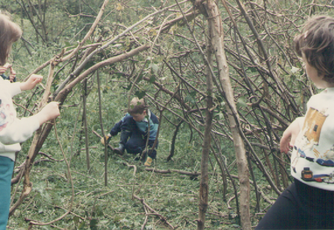
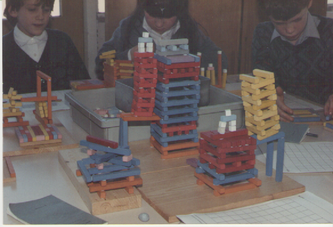
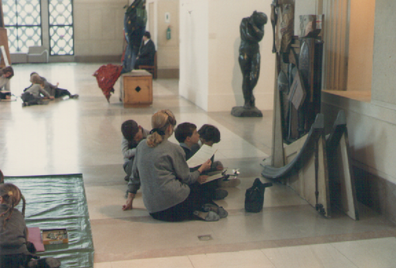
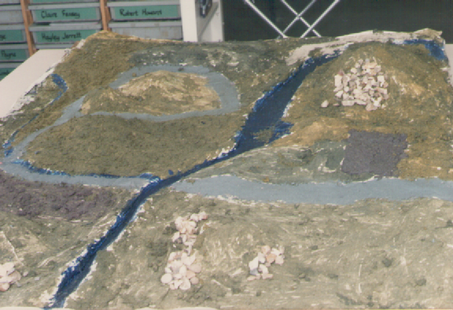
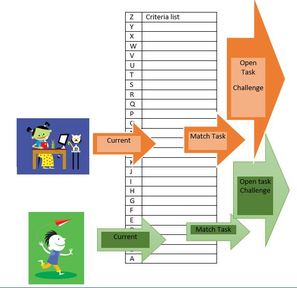
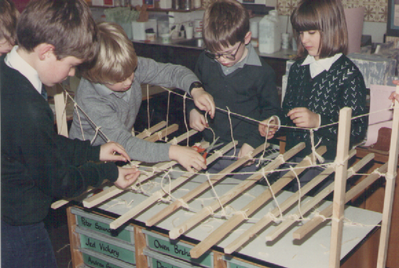
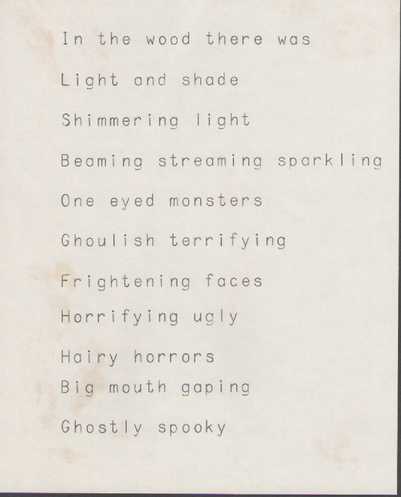
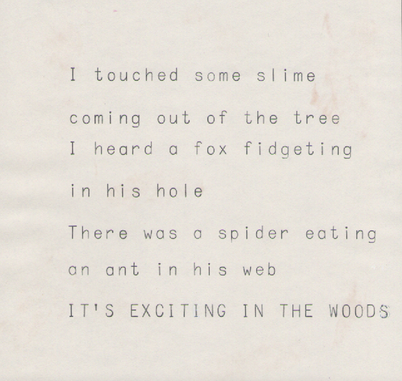
 RSS Feed
RSS Feed
